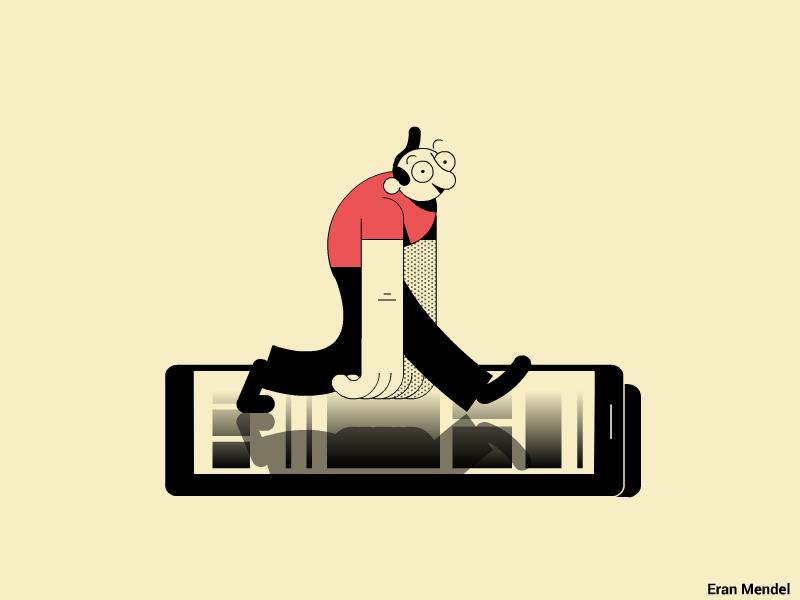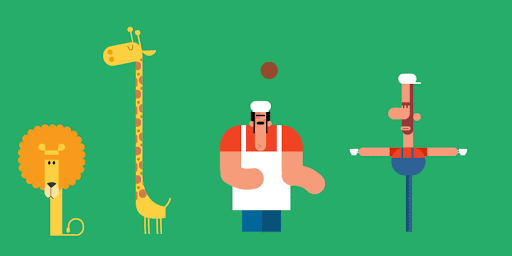Looped States
- Clara Schroeder

- Oct 1, 2020
- 6 min read
Updated: Mar 27, 2021
Statement of Intent:
Through this animation, I intend to bring awareness to a significant cause of ocean contamination; oil pollution. Routine shipping run-offs and ocean dumping occur daily in large quantities (Hydrocarbon Dumping, n.d.). Oil cannot dissolve in water, trapping and suffocating animals and killing aquatic plants by blocking sunlight. The effects of oil contamination can last for decades, for example, consequences of the 2011 Rena oil spill disaster are still seen throughout the Tauranga harbour today.
In reflection of the United Nations statistic that 40 per cent of the ocean is devastated by pollution (Goal 14, n.d.), my looped state animation aims to convey the literal causes of ocean contamination through the Rena oil spill disaster. Furthermore, I intend viewers to reflect on the impacts of ocean pollution on future generations and its consequences on wildlife as represented by the dead rubber duckies. To emphasise these key elements, I have combined sound effects of wet mud and a baby giggling to create a haunting atmosphere.
I hope the message of my narrative resonates with viewers and urges them to stop playing with the future of our ecology and generations to come.
Process:
The assignment brief challenged us to undertake a process of creative interpretation and abstraction to reveal novel insight into a United Nations statistic. Using this, code an infinite state animation that has been generated using processing.
The Sustainable Development Goal #14 aims to conserve and sustainably use the oceans, seas and marine resources for sustainable development. From this goal, I chose the statistic that 40 per cent of the ocean is heavily affected by human activities (including pollution, depleted fisheries, and loss of coastal habitats).
Research
To gain novel insights into the causes of ocean pollution, I researched the history of ocean contamination. The majority of contributing factors to the destruction of marine ecology are human-created products that enter the ocean. These are primarily land sourced pollution, such as plastic debris and chemical toxins (Howard, 2019) which get into our waterways and eventually into the ocean.
Additionally, the loss of coastal habitats has impacted marine wellbeing as cities, and other urban areas crowd our coastlines. These urban spaces prevent natural water filtration (Howard, 2019) via the ground soil because much of the earth's surface is covered by roading and housing. Therefore, water can no longer be purified by these natural systems, which has resulted in chemical toxins leaching into our oceans.
These factors play a crucial role in depleting the health and wellbeing of our oceans. Overall the defining catalysts driving these effects are us, human beings, living out of harmony with the natural realm and wreaking destruction through our capitalist consumption values and industrially driven lifestyles.
The ocean is one of our biggest allies in the fight against climate change. It absorbs about 30 per cent (CO2 and Ocean Acidification, 2019) of carbon dioxide produced by humans, which can buffer the impacts of the climate crisis. However, carbon pollution is changing the ocean's chemistry, slowing its ability to uptake CO2, making it more acidic, and harming marine life we depend on.
The ocean has absorbed about 29% of global CO2 emissions since the end of the preindustrial era. In the last decade (from 2008-2017), we've dumped into the atmosphere about 40 gigatons of emissions of heat-trapping gases each year (CO2 and Ocean Acidification, 2019).
Key takeaway: As we look into our future, we must focus our efforts on creating a circular consumption model and minimising our pollution. We must call world leaders to action and demand greater accountability and environmental governance worldwide.
Ideation

For my research, I ideated several animations. First, I attempted to show an abstract representation of consumerism and urbanisation. However, I found these sketches to be ineffective as they were too far removed from my statistic about the ocean.
My second approach was to research case studies of ocean pollution in recent years. I found these visual explorations of real events to be quite useful in communicating my message.
I chose to focus on the Rena case study because it is one of New Zealand's worst environmental disasters and well known by my audience due to its widespread media coverage. Thus, I explored several creative interpretations of the Rena disaster. I decided the bathtub scene was most impactful in its message as it not only investigated the immediate effects of oil pollution but also implied it's consequences on wildlife and future generations.

Final ideation:

Rena Oil Spill Disaster
In 2011 the Rena container ship ran aground causing up to 350 tonnes of oil to spill into the Tauranga harbour. This environmental disaster saw a 5km oil slick spread across rich fish fishing waters (APNZ, 2011). To clean up the leak, Maritime New Zealand used the oil dispersant Corexit 9500 which is known to increase the toxicity of oil ("Rena", 2011; Cooke, 2011).
The Rena oil spill disaster poisoned the harbour, devastating the ecology of our ocean in the bay of plenty. Twenty thousand sea birds fell victim to the oil spills effects; this crushed the BoP population of already endangered NZ dotterels (Sands, 2011). Three hundred eighty-three oiled little blue penguins were admitted to the oiled wildlife facility (Backhouse, 2011). Several fur seals were captured to keep them out of the oily waters (Sands, 2011). Filter-feeding whales were at risk from sticky oil clinging to their baleen plates as they fed. And the oil's effect on finfish, shellfish, crustaceans and other marine life was disastrous (Sands, 2011).
Images Via 'Oil Spill Disaster on New Zealand Shoreline' - The Atlantic
Artist Study: Eran Mendel
Mendel is a freelance animation director and designer based in Tel Aviv. His popular designs have been commissioned by publishers, corporations, start-ups and creative agencies for all media types. Among his creative works are mesmerising looped animations which typically depict up to two main characters involved in repetitive activities against a block-colour backdrop. His characters are often depicted in a comic illustration style as caricatures, for example, a top-heavy athlete, a cannonball Santa and a waif witch. Inspired by his favourite TV shows and films, Medel breathes a simplicity to his drawings which juxtaposes their child-like look with their satirical commentary. If you would like to see more of his works, check out his Instagram @eranmendel.
I intend to use a similar animation style in my work by focusing on a repetitive interaction of the main character or icon against a simplistic background. Additionally, I aim to utilise shadows, as seen throughout Mendel's work, to create depth and set key elements into perspective against the backdrop.
Images Via 'Dribble' - Eran Mendel
Illustrations
Throughout the illustration process, I utilised references to my initial sketch and pictures of the Rena as a guide. Once I had achieved the look of my initial sketch, I realised the scene was too clean to convey my message effectively.

I re-illustrated the Rena, babies' arm and rubber duckies with chunks of oil slick stuck to them to re-create the nauseating look of an oil spill. To further emphasise the oil filth, I changed the water to a deep lumpy green and added chunks of crude oil to the bathroom background.
In reflection, dirtying the scene was crucial to the success of my final animation. The juxtaposition of a clean bathroom against the nasty oil spill instantly reveals a sense of urgency to avoid this dystopian world of environmental crisis.
Coding
To code my animation, I employed simple techniques from my previous coding work. I used a push and pop matrix to apply a wave function to each key illustration; this made the Rena and ducks look as if they're bobbing up and down.
PImage duck2;
void setup() {
size(1080, 1080);
duck2 = loadImage("Duck2.png");
}
pushMatrix();
translate(0,wave(12,14));
image(duck2,985,555,540,540); //duckie2 placement
popMatrix();
}
//wave function
float wave(float waveSize, float waveSpeed) {
float output;
float frequency=frameCount;
output=(waveSize/2.7)*sin(frequency*waveSpeed/30);
return(output);
}
Sound
To tie the animation together, I sourced several royalty-free sound clips of a baby giggling (gumballworld, 2017) and the squelching wet mud (jymdavis, 2012). Using Garage Band, I cut these clips together and inserted a loop audio code into the animation. I believe the audio effectively ties together my animation to create a haunting interpretation of the Rena oil spill irreversibly polluting our ocean.
Final Animation: Stop Playing With Their Future

Reflection
Overall, I enjoy how my concept vision translated into my final animation. When I showed the final work to my friends, they commented on how the imagery evokes a strong emotive response of both disgust and fear, which is what I'm aiming for. Taking a critical view of my work, I didn't explore all of the possibilities to animate movement in this sketch. I should have challenged myself to refine the interaction between the baby Rena toy rather than focusing on the aesthetics.
In conclusion, though the animation is successful, I am not completely satisfied with my output as it didn't challenge me to improve upon my skill set.
References:
APNZ, I. D., Jamie Morton, Matthew Theunissen, Newstalk ZB. (2011, October 11). Rena spill: “Tomorrow much
worse.” NZ Herald. https://www.nzherald.co.nz
Backhouse, M. (2011, December 27). Penguin reigns in battle for nation’s hearts. NZ Herald.
https://www.nzherald.co.nz/nz/news/article.cfm?c_id=1&objectid=10775569
CO2 and Ocean Acidification. (2019, January 30). https://www.ucsusa.org/resources/co2-and-ocean-
acidification
Goal 14: Life below water. (n.d.). UNDP. Retrieved October 1, 2020, from
https://www.undp.org/content/undp/en/home/sustainable-development-goals/goal-14-life-below-
water.html
gumballworld. (2017, July 30). Freesound—"Baby Laughs GigglesS PE144701" by gumballworld. Free Sound.
https://freesound.org/people/gumballworld/sounds/398550/
Howard, J. (2019, August 2). Marine pollution, explained. National Geographic.
https://www.nationalgeographic.com/environment/oceans/critical-issues-marine-pollution/
Hydrocarbon dumping. (n.d.). Retrieved October 1, 2020, from
https://europe.oceana.org/sites/default/files/reports/oil-report-english.pdf
jymdavis. (2012, January 3). Mud squish by jymdavis. Freesound.
https://freesound.org/people/jymdavis/sounds/140477/
Rena: Oil clean-up chemical worries Greenpeace. (2011, November 24). NZ Herald.
https://www.nzherald.co.nz/nz/news/article.cfm?c_id=1&objectid=10768517
Sands, N. (2011, October 16). New Zealand counts wildlife cost from oil spill. https://phys.org/news/2011-10-
zealand-wildlife-oil.html









































Comments